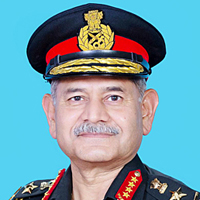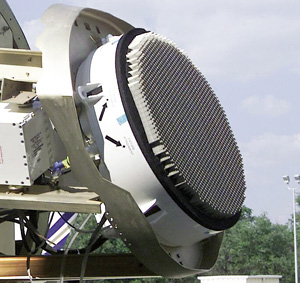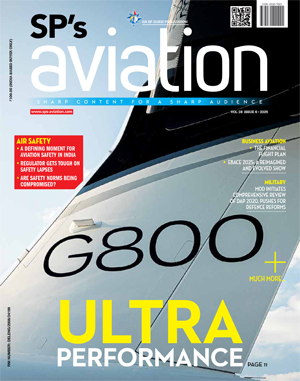INDIAN ARMED FORCES CHIEFS ON OUR RELENTLESS AND FOCUSED PUBLISHING EFFORTS

The insightful articles, inspiring narrations and analytical perspectives presented by the Editorial Team, establish an alluring connect with the reader. My compliments and best wishes to SP Guide Publications.

"Over the past 60 years, the growth of SP Guide Publications has mirrored the rising stature of Indian Navy. Its well-researched and informative magazines on Defence and Aerospace sector have served to shape an educated opinion of our military personnel, policy makers and the public alike. I wish SP's Publication team continued success, fair winds and following seas in all future endeavour!"

Since, its inception in 1964, SP Guide Publications has consistently demonstrated commitment to high-quality journalism in the aerospace and defence sectors, earning a well-deserved reputation as Asia's largest media house in this domain. I wish SP Guide Publications continued success in its pursuit of excellence.
- The layered Air Defence systems that worked superbly, the key element of Operation Sindoor
- Operation Sindoor | Day 2 DGMOs Briefing
- Operation Sindoor: Resolute yet Restrained
- India's Operation Sindoor Sends a Clear Message to Terror and the World – ‘ZERO TOLERANCE’
- Japan and India set forth a defence cooperation consultancy framework, talks on tank and jet engines
Interview - John Fagnant, Director of ISR and Targeting Strateg

In an interview with John Fagnant, Director of ISR and Targeting Strategy at the Northrop Grumman Electronic Systems sector, SP’s Aviation discovered the historical and cultural qualities that have made the company a leader in Active Electronically Scanned Array (AESA) technology. In part I of the interview published in SP’s Aviation November 2010 issue, we had explored the differences between one AESA and another. Fagnant spoke how Northrop Grumman has developed a culture of AESA with years of experience in pursuing generational shifts in software and hardware architecture. In part II, Fagnant discusses on future developments, costs, and common radar heritage.
SP’s Aviation (SP’s): Can you tell us more about future developments?
John Fagnant (Fagnant): Our AESAs aren’t just radars. This is a big difference between Northrop Grumman AESA and the others available in the market. Our ability to exploit this expansion in operational bandwidth in any manner the customer chooses means we can do radar, communications, jamming, passive detection, or electronic support—all within the bandwidth our system exploits. This is the next step we’ve been taking with our AESA architecture.
If you walk down to our manufacturing floor today, you can see a lot of new tooling coming in associated with the ramp up of the F-35 programme, but you are also going to see a lot of new tooling associated with that next generation of AESA technology as it applies to other sensors and platforms. We’re putting entirely new manufacturing lines there to construct the new pieces of hardware architecture that we’ll need for the next level of AESA development that our customers are going to take advantage of—whether for airborne, land, maritime or space applications. The next generation of architecture is going to have fewer parts, which means less cost for the customer. With time, a much simpler AESA architecture means a much simpler manufacturing process that leads to less time on the assembly line—and cost efficiency back to the customer.
SP’s: AESA development is very expensive. What is Northrop Grumman doing about costs?
Fagnant: Back then, our mindset wasn’t to build one thing and say, “We’re just going to add this and add that.” The customers’ concern for diminishing manufacturing capabilities, and expenses associated with hardware changeovers, was a big deal to us. What we learned from the F-22 experience was, “let’s continue that generational cycle.” Let’s make one major investment at a time to create a generational architecture of hardware and software modes that our entire customer base can take advantage of so that they’re not all paying the non-recurring costs associated with successive singular programmes. We are seeing important engineering and manufacturing efficiencies that translate into time and costs efficiencies for our customers.
This generational architecture just doesn’t reside in one or two airborne types of AESAs. You can see it in our ground-based, maritime, and high/low altitude aircraft. As we move forward into future AESAs, you actually get to see examples of where our AESAs are better because of all these cultural factors at play.
In our experience with customers, we tend to ask whether the customer is thinking about a certain threat. But we can then say that the customer doesn’t have to invest now. We have something that will work for you that’s ready to roll. This is an advantage cultivated across our entire product base and it’s a direct result of this generational approach with software and hardware.
SP’s: Can you give us examples of Northrop Grumman AESA programmes that share a common AESA heritage?
Fagnant: We’ve been able to demonstrate the same sorts of capabilities on just about any platform you would want. Creating platform-agnostic capability with our AESAs is a customer’s need. We never start solving a customer’s sensor needs by saying, “Okay, let’s start from scratch on a new AESA system.” Depending on the performance requirement and timeframe, we usually refer back to a previous architecture or generation of AESAs, already in progress. With the budget constraints we’re seeing right now, the answer to almost every customer requirement is, “What do we have on the shelf right now?” As I mentioned before, it’s Northrop Grumman’s generational approach to open systems architecture that makes our sensors very agnostic. Regardless of the platform, the modes and hardware play well with each other. While there’s always fine tuning required for each system or customer, the value proposition is significant when you consider the non-recurring expenses (NRE) associated with AESA.
For example, we’ve offered the APG-81, originally designed for the F-35, as a possible option for the B-1and B-52 bomber platforms. We’ve even offered other fighter AESAs as options, which dramatically emphasises the point that our solutions are indeed platform agnostic. The last B-52 was built in 1964, and we’re confident we can put the world’s most advanced AESA on it. Being able to retrofit an aircraft that old with an AESA like the APG-81 is really a credit to how agnostic we believe the modes, software and hardware interfaces really are. The scalable approach ultimately reduces the NRE impact for the customer.
We know that the APG-81, APG-80, and APG-77 have a lot in common. And we’ve taken it to other domains. The ground/air task oriented radar (G/ATOR) we are producing for the US Marine Corps has a lot of APG-81 in it. Even though it operates in a different bandwidth, there’s a lot going on in the back end and that’s APG-81.





